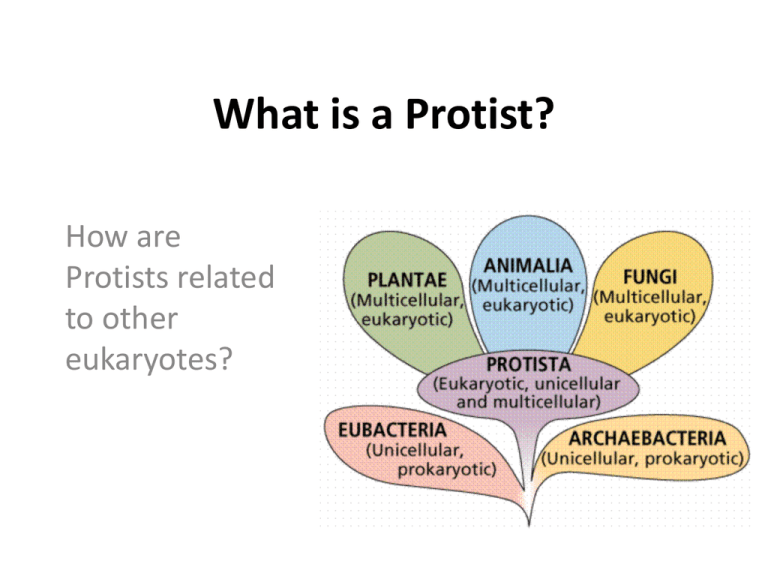Term Used to Describe a Heterotrophic Usually Motile Unicellular Protist
Most protists are motile and generate movement with cilia flagella or pseudopodia. Some protists are heterotrophic and motile.
Protists may have animal-like cell membranes plant-like cell walls or may be covered by a pellicle.

. Other protists are heterotrophic and consume organic materials such as other organisms to obtain nutrition. Many protists have flagella or cilia which they beat or whip about to move in their watery environment. Protists that store energy by photosynthesis belong to a group of photoautotrophs and are characterized by the presence of chloroplasts.
They are generally motile by way of cilia Paramecium is an example All are either intercellular or extracellular parasites They possess chloroplasts They possess an apical complex A heterotrophic protozoan that propels itself with a flagellum is most likely an Sporozoans Amoeba Ciliate Flagellate The organism depicted is a. Amoeba and simple heterotrophic2 organisms eg. Amoebas and some other heterotrophic protist.
Protists are primarily unicellular eukaryotes with heterotrophic andor photosynthetic nutrition that are not plants animals or fungi. Protists exhibit many forms of nutrition and may be aerobic or anaerobic. Using pseudopods flagella or cilia which are shown in Figure below.
Some like amoeba use pseudopodia or false feet while others use flagella or cilia. Some protists have one or more flagella which they rotate or whip. Protista comprises an assortment of primitive unicellular colonial and multicellular eukaryotes including simple photoautotrophic1 organisms ie.
O Have chloroplasts that contain chlorophyll and may have other pigments o Primary producers of food. Term used to describe a heterotrophic usually motile unicellular protist. They are classified on the basis of their mode of locomotion.
The term Protista is derived from the Greek word protistos meaning the very first. Protists exhibit many forms of nutrition and may be aerobic or anaerobic. Microscopic suspended organisms that feed on other organisms.
These free-living protists are among the major consumers of bacteria and contribute to species diversity in many ecosystems. This course will primarily focus on photoautotrophic protists. Unicellular prokaryotic found in extreme environments.
Others are covered in rows or tufts of tiny cilia that they beat in. Slime molds and Oomycetes. Algae protozoa mobile heterotrophic and animal-like eg.
Some protists are heterotrophs and ingest food by phagocytosis while other types of protists are photoautotrophs and store energy via photosynthesis. Protozoans are unicellular animal-like heterotrophic and sometimes parasitic organisms that are further sub-divided based on characteristics such as motility such as the flagellated Flagellata the ciliated Ciliophora the phagocytic amoeba and the spore -forming Sporozoa. The common term used to describe a heterotrophic usually motile unicellular protist.
But use a variety of pigments protozoans are heterotrophic by ingestion water molds and slime molds are heterotrophic by a-----energy nutrients. Term used to describe a one-celled organism is _____. Heterotrophic protists can be categorized based on their type of movement or lack of locomotion.
Most single-celled protists are motile but these organisms use diverse structures for transportation. Encyclopedia of Inland Waters 2009. Heterotroph multicellular cells have a nucleus reproduces sexually is able to move itself.
The majority of protists are motile but different types of protists have evolved varied modes of movement Figure 2. Zooplankton Microscopic suspended organisms that feed on other organisms. Amoebas are examples of protists that move using pseudopodia.
Some of them even possess structures that. Term used to describe a hetrotrophic usually motile unicellular protist Zooplankton microscopic animals that swim or drift near the surface of aquatic environments feed on other organisms. Examples of heterotrophic protists include amoebas paramecia sporozoans water molds and slime molds.
Organism that can obtain nutrition by autotrophic or heterotrophic means usually facultatively. Select all correct statements regarding sporozoans. Some protists are not motile but most protists are able to move about.
Protists can move about in three ways. Other protists are heterotrophic and consume organic materials such as other organisms to obtain nutrition. These organisms are usually unicellular and the cell of these organisms contains a nucleus which is bound to the organelles.
Those that store energy by photosynthesis belong to a group of photoautotrophs and are characterized by the presence of chloroplasts. The term p----- common term used to describe organism with features-usually motile-heter0trophic. Biology of Protists - unicellular - colonial - multicellular - complex shapes.
A common term used to describe a heterotrophic usually motile unicellular protist is protozoan The most widespread and dangerous protozoal disease in the world is.

Kingdoms And Domains 18 3 Biology Notes Science Biology Prokaryotic Cell

Characteristics Of Protists Eukaryotic Mostly Unicellular Autotrophic And Heterotrophic Forms Ppt Download

Fungi Multicellular Eukaryotic Heterotrophic Archaea Unicellular Prokaryotic Autotrophic Animal Multicellular Eukaryotic Heterotrophic Protist Algae Ppt Powerpoint

Comments
Post a Comment